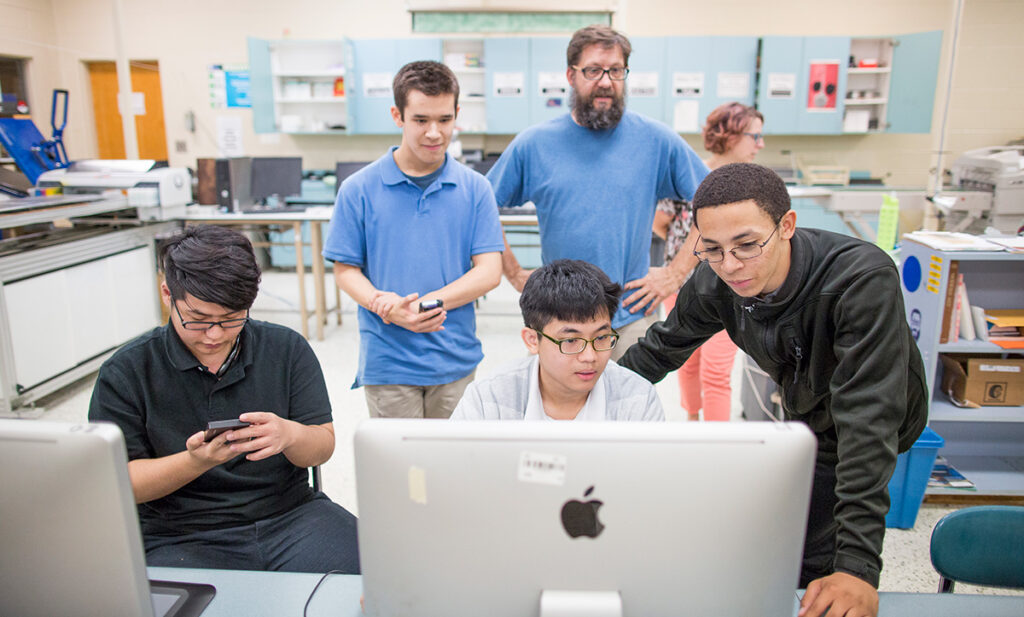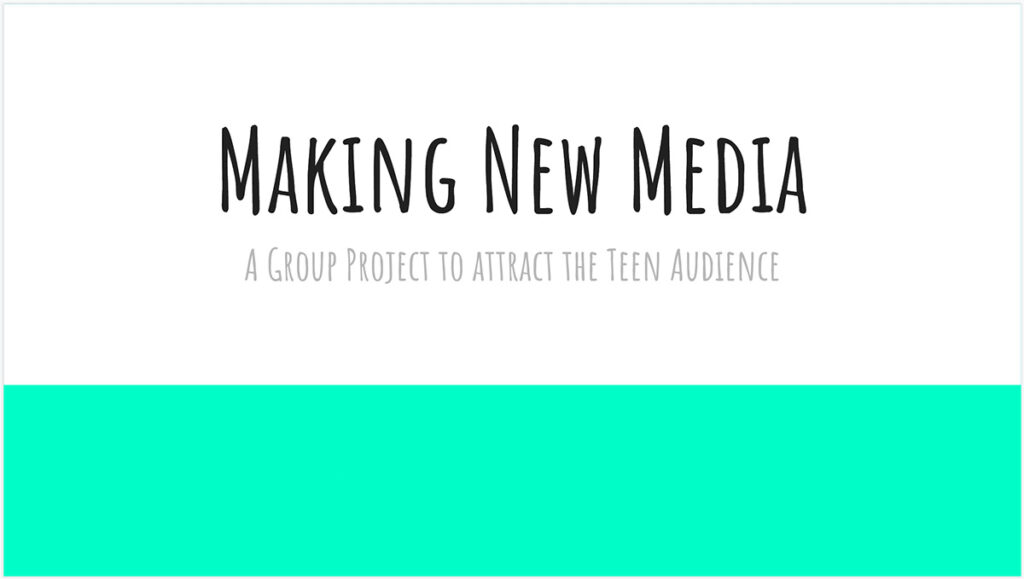
Studies have shown that today’s youth don’t read newspapers or watch the nightly news. High-school students don’t need to read studies to know this.
Where do students get their news? Here’s what the studies show: Instagram, TikTok, Twitter, other social media outlets.
What if?
Ask students: What if you could develop your own news site that would appeal to your peers? What would that be? What would be so new and fresh that it would naturally draw teens to the news presentation app or site?
Teenagers are capable of creating amazing inventions. Maybe they can take that same creativity and entrepreneurship and redefine the way they obtain the news.
As students begin thinking about different methods of presenting the news, encourage them to:
Be inspired. Be creative. Be bold. Be realistic?
Designing the New Media
Download the PowerPoint slideshow to adapt as your own:

In groups, which the teacher assigns, the task is to create a template for a new media publication.
Consider:
- What kinds of information would you include in your publication? What will it emphasize—news, features, sports, something else?
- Do you limit your audience to just one age group, or do you broaden the audience for a wider readership?
- How will you present the media product? Who will develop the technology?
- What will it cost to create this?
- What will it cost for your audience to access this?
- Besides generating revenue from subscriptions, will you have other revenue sources?
- What issues will complicate this venture?
- Besides the number of clicks, how will you gauge the effectiveness of your media product?
Group work:
Engage in lively debate. Try to come up with something new. Make it engaging.
Develop a pitch for this media product. Include:
- Images and infographics to help display and explain your media.
- Be able to explain how and why you developed this idea and the advantages it will have over other media outlets.
- The pitch should be three to five minutes.
- Your classmates will evaluate your product and pose questions that will help you refine it.
Creativity, plausibility, use of technology and student involvement of all group members will stand as criteria for evaluation.

